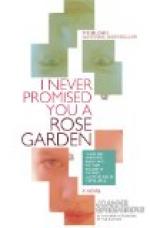No, The Garden, You, and I know that hardy plants, native and acclimated, may be had in bloom from hepatica time until ice crowns the last button chrysanthemum and chance pansy, but to have every bed in continuous bloom all the season is not for us, any more than it is to be expected that every individual plant in a row should survive the frost upheavals and thaws of winter.
If a garden is so small that half a dozen each of the ten or twelve best-known species of hardy herbs will suffice, they may be bought of one of the many reliable dealers who now offer such things; but if the place is large and rambling, affording nooks for hardy plants of many kinds and in large quantities, then a permanent seed bed is a positive necessity.
This advice is especially for those who are now so rapidly taking up old farmsteads, bringing light again to the eyes of the window-panes that have looked out on the world of nature so long that they were growing dim from human neglect. In these places, where land is reckoned by the acre, not by the foot, there is no excuse for the lack of seed beds for both hardy and annual flowers (though these latter belong to another record), in addition to space for cuttings of shrubs, hardy roses, and other woody things that may be thus rooted.
If there is a bit of land that has been used for a vegetable garden and is not wholly worn out, so much the better. The best seed bed I have ever seen belongs to Jane Crandon at the Jenks-Smith place on the Bluffs. It was an old asparagus bed belonging to the farm, thoroughly well drained and fertilized, but the original crop had grown thin and spindling from being neglected and allowed to drop its seed.
In the birth of this bed the wind and sun, as in all happy gardens, had been duly consulted, and the wind promised to keep well behind a thick wall of hemlocks that bounded it on the north and east whenever he was in a cruel mood. The sun, casting his rays about to get the points of compass, promised that he would fix his eye upon the bed as soon as he had bathed his face in mist on rising and turned the corner of the house, and then, after watching it until past noon, turn his back, so no wonder that the bed throve.
Any well-located bit of fairly good ground can be made into a hardy seed bed, provided only that it is not where frozen water covers it in winter, or in the way of the wind, coming through a cut or sweeping over the brow of a hill, for flowers are like birds in this respect,—they can endure cold and many other hardships, but they quail before the blight of wind.
For all gardens of ordinary size a bit of ground ten feet by thirty feet will be sufficient. If the earth is heavy loam and inclined to cake or mould, add a little sifted sand and a thin sprinkling of either nitrate of soda or one of the “complete” commercial manures. Barn-yard manure, unless very well rotted and thoroughly worked under, is apt to develop fungi destructive to seedlings. This will be sufficient preparation if the soil is in average condition; but if the earth is old and worn out, it must be either sub-soiled or dug and enriched with barnyard (not stable) manure to the depth of a foot, or more if yellow loam is not met below that depth.




